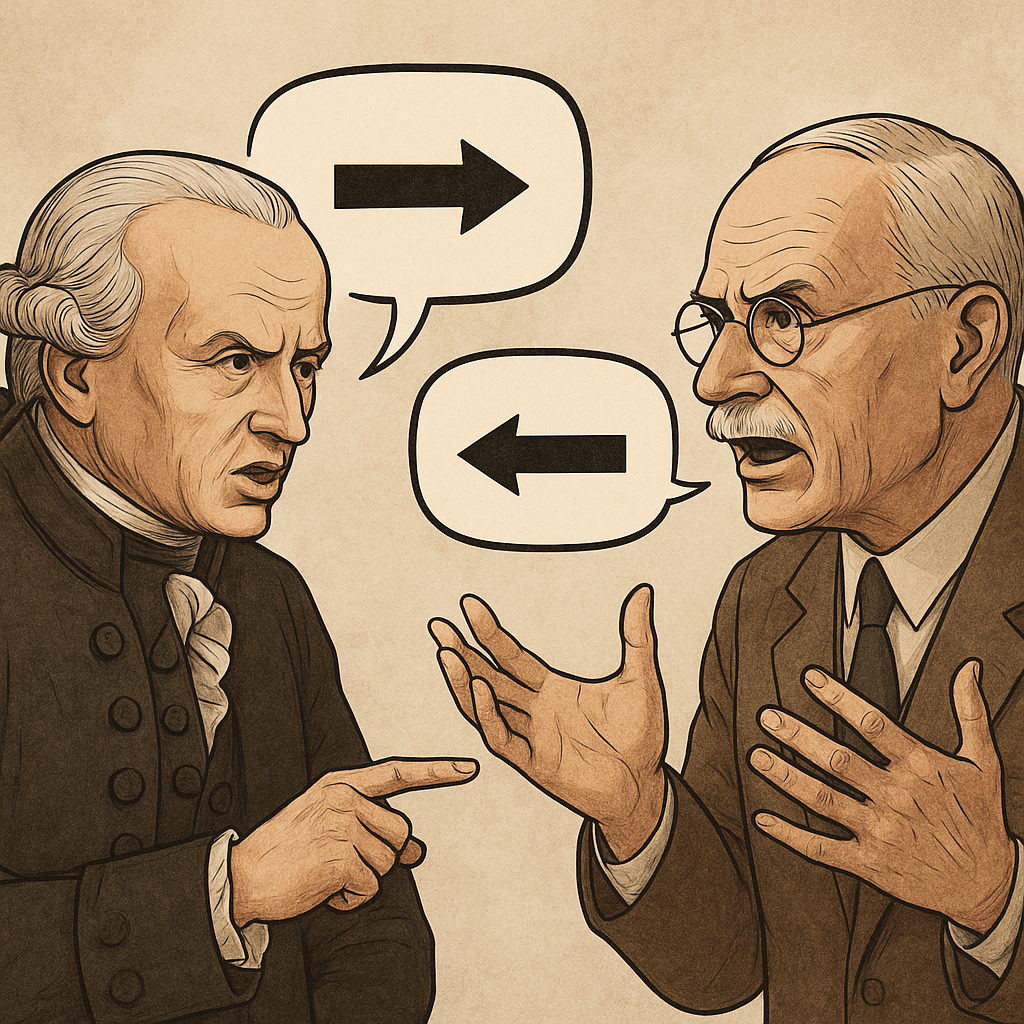Why Kantor’s Behavioural Propensities Model Beats “Bristol Mayers” for Actionability—And How to Put It to Work

For clarity, I’m comparing David Kantor’s model with the better-known Myers-Briggs Type Indicator (often mis-heard as “Bristol Mayers”).
1. From Personality Labels to Observable Moves
| Point of Comparison | Kantor Behavioural Propensities | Myers-Briggs (MBTI) |
|---|---|---|
| Unit of analysis | In-the-moment speech act (Move, Follow, Oppose, Bystand) | Stable trait (e.g., INFP) |
| Focus | Communication behaviours you can see and coach | Internal preferences you infer |
| Time horizon | Real-time: “What just happened in that meeting?” | Lifelong: “Who am I, generally?” |
| Intervention hook | Change the next utterance → shift system dynamics | Build self-awareness → indirect behavioural change |
| Tooling required | Quick behavioural mapping; no proprietary test | Licensed psychometric instrument |
Because Kantor works at the level of concrete speech acts rather than abstract personality, it gives facilitators, team leads, and even peers a direct lever: call out which of the four roles is missing or over-used, invite it, and watch the conversation rebalance.
2. The Model in 60 Seconds
- Move – introduces new direction or idea.
- Follow – supports, aligns, or fleshes out that move.
- Oppose – challenges or tests the idea for robustness.
- Bystand – offers perspective, data, or reflection without taking a side.
Healthy dialogue cycles through all four. Stuck dialogue over-uses one and suppresses others (e.g., serial Moves without Follows).
3. Why It’s More Actionable
| Actionability Lever | How Kantor Delivers |
|---|---|
| Diagnostics in real time | You can literally tick marks on a flip-chart for each role spoken. |
| Immediate invitations | “We’ve had three Moves in a row—can someone Oppose or Bystand?” |
| Role fluidity | People are not boxed as “a Move type”; anyone can take any role next. |
| Systemic lens | Shifts blame from individuals to interaction patterns, lowering defensiveness. |
| Scalable language | A five-minute teach-in equips whole teams with a shared vocabulary. |
Contrast this with MBTI: discovering you’re an ENFJ can be illuminating, but deciding what to say differently in today’s planning session is less obvious.
4. Applying the Model: A Mini-Playbook
| Context | What to Watch For | Micro-Intervention |
|---|---|---|
| Weekly stand-ups | Rapid-fire status “Moves”; few challenges. | Ask, “Who sees a risk to this plan?” to surface an Oppose. |
| Brainstorming | One vocal idea generator dominates. | Invite a Bystand: “What patterns are emerging in our ideas?” |
| Decision crunch | Debate stuck in binary Oppose–Move ping-pong. | Prompt Follows: “Who can build on either proposal?” |
| Retrospective | Silence after tough sprint. | Model a Bystand yourself: “I’m noticing the energy just dropped—what’s going on?” |
5. Step-by-Step Implementation
- Introduce the quartet.
- Ten-minute micro-lesson; give each role a colored sticky note.
- Live code meetings.
- Assign one person to mark M/F/O/B on a shared doc or whiteboard.
- Debrief: Which roles were scarce? What effect did that have?
- Rotate the observer.
- Everyone experiences seeing the system; psychological safety grows.
- Build reflexive prompts.
- Print quick questions on table tents (e.g., “Who can Follow?”).
- Pair with MBTI insights (optional).
- Use MBTI for self-reflection; use Kantor for interaction correction.
6. Case Snapshot
Setting: Product leadership team, 8 people, largely “NT” in MBTI terms.
Problem: Strategy off-sites became duels of half-finished “Moves.”
Intervention:15-min Kantor briefing.Real-time tracking during roadmap debate.When tally showed 12 Moves, 0 Follows, facilitator paused: “Let’s harvest a few Follows.”
Result: Within 20 minutes the team surfaced aligned criteria and closed two decisions previously stalled for weeks.
7. Tips & Traps
| Do | Don’t |
|---|---|
| Use neutral language: “We’re missing a Bystand,” not “You’re oppositional.” | Label people (“She’s always an Oppose”). Roles are situational. |
| Celebrate balanced cycles—make it visible. | Treat it as a scorecard; aim for insight, not perfection. |
| Combine with core facilitation moves: paraphrase, stack, synthesize. | Expect culture change overnight; practice embeds over several sprints. |
8. Final Word
Personality frameworks like Myers-Briggs help us understand who is in the room. Kantor’s Behavioural Propensities model helps us change what’s happening in the room—right now. If you need fast traction on communication gridlock, start counting Moves, Follows, Opposes, and Bystands. The simple act of naming the pattern empowers a team to rewrite it.
Move, Follow, Oppose, Bystand—repeat.
That’s not just a model; it’s a muscle your team can start training in the very next meeting.
ChatGPT o3 (20250521)
Blog post about how Kantor Behavioural Propensities model is more actionable than Bristol Mayers and how to apply it